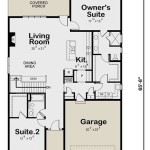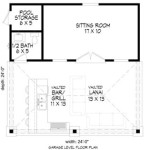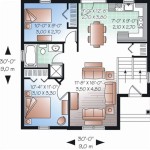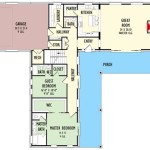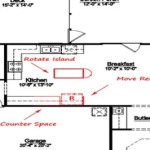Pier and Beam Foundation Plans
A pier and beam foundation is a type of foundation that is commonly used in residential construction. It consists of a series of piers that are spaced evenly apart and support a series of beams. The beams, in turn, support the floor joists and the rest of the house. Pier and beam foundations are typically used in areas where the soil is not strong enough to support a traditional slab foundation. They are also a good option for homes that are built on slopes or in areas with high water tables.
Benefits of Pier and Beam Foundations
There are a number of benefits to using a pier and beam foundation, including:
- Strength and durability: Pier and beam foundations are very strong and durable, and they can support a great deal of weight. This makes them a good option for homes that are located in areas with high winds or earthquakes.
- Flexibility: Pier and beam foundations are flexible, which means that they can adapt to changes in the soil conditions. This makes them a good option for homes that are built on slopes or in areas with high water tables.
- Cost-effectiveness: Pier and beam foundations are relatively cost-effective to install, especially when compared to other types of foundations, such as slab foundations.
Drawbacks of Pier and Beam Foundations
There are also some drawbacks to using a pier and beam foundation, including:
- Complexity: Pier and beam foundations are more complex to install than other types of foundations, such as slab foundations. This can lead to higher labor costs.
- Maintenance: Pier and beam foundations require more maintenance than other types of foundations, such as slab foundations. This is because the piers and beams can rot or deteriorate over time.
- Crawlspace: Pier and beam foundations create a crawlspace beneath the house. This crawlspace can be used for storage, but it can also be a source of moisture and pests.
Pier and Beam Foundation Plans
If you are considering building a home with a pier and beam foundation, it is important to have a detailed set of plans. These plans should include the following information:
- The location and dimensions of the piers
- The size and spacing of the beams
- The type of soil that the foundation will be built on
- The load that the foundation will be supporting
A qualified engineer should prepare the plans for your pier and beam foundation. This will ensure that the foundation is designed to meet the specific needs of your home.
Conclusion
Pier and beam foundations are a good option for many homes. They are strong, durable, and flexible. However, they are also more complex and expensive to install than other types of foundations. If you are considering building a home with a pier and beam foundation, be sure to have a detailed set of plans prepared by a qualified engineer.

How To Build A Concrete Pier Foundation Shedplans Org

How To Modify A Standard Post And Pier Foundation Plan
Pier And Beam Foundation Diagram Design Guide

Pier And Beam Foundation Repair For Oakland San Francisco

Concrete Footing Details For Your Kit Home Foundation Floor System

How To Construct A Pier And Beam Foundation

Pier And Beam Foundations Khouse Progress Life Of An Architect

Foundation Advice Small Cabin Forum

Pier And Beam Foundation Construction Design
Helical Pier And Grade Beam Foundation Jlc


